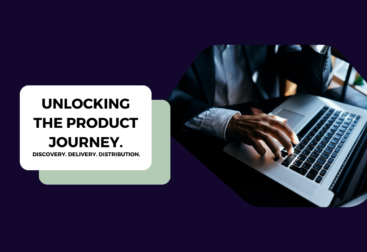Being a product manager is a complex and multifaceted role. It requires a balance of strategic thinking, technical knowledge, and interpersonal skills. While navigating this intricate landscape, even seasoned product managers can make mistakes that impact the success of their products and careers. Here, we explore 24 common mistakes product managers often make and offer practical solutions to avoid them.
1. Lack of Clear Vision
A product without a clear vision is like a ship without a compass. It’s crucial to define a clear and compelling product vision that guides the development process. This vision should be communicated consistently to all stakeholders to ensure alignment and focus.
Solution: Spend time developing a strong product vision and communicate it clearly and frequently to your team and stakeholders.
2. Ignoring Market Research
Skipping market research is a surefire way to develop products that miss the mark. Understanding the market, customer needs, and competitive landscape is essential.
Solution: Invest in thorough market research to gather insights that inform your product strategy and decision-making process.
3. Poor Prioritization
Not all features are created equal. Failing to prioritize effectively can lead to resource wastage and delayed product releases.
Solution: Use frameworks like MoSCoW (Must have, Should have, Could have, Won’t have) or the Eisenhower Matrix to prioritize features and tasks.
4. Overengineering
Building more features than necessary can bloat your product and complicate user experience. Focus on solving the core problem efficiently.
Solution: Embrace the MVP (Minimum Viable Product) approach to validate your ideas with minimal resources and iterate based on user feedback.
5. Neglecting User Feedback
User feedback is a goldmine of information. Ignoring it can lead to products that don’t meet user needs or expectations.
Solution: Create regular feedback loops with your users through surveys, interviews, and usability tests to gather and act on their input.
6. Weak Communication Skills
Effective communication is vital for a product manager. Miscommunication can lead to misunderstandings, misaligned goals, and missed deadlines.
Solution: Develop strong communication skills by practicing active listening, clear writing, and concise speaking. Ensure transparency and regular updates with your team and stakeholders.
7. Failure to Define Success Metrics
Without clear success metrics, it’s challenging to gauge whether your product is meeting its goals.
Solution: Define key performance indicators (KPIs) and OKRs (Objectives and Key Results) at the outset and measure progress regularly.
8. Overpromising and Underdelivering
Promising more than you can deliver leads to disappointed stakeholders and users. It’s crucial to set realistic expectations.
Solution: Be honest about what can be achieved within the given constraints and deliver on those promises consistently.
9. Ignoring Technical Debt
Accumulating technical debt by taking shortcuts can lead to long-term problems and hinder future development.
Solution: Address technical debt promptly by allocating time for refactoring and maintaining a clean codebase.
10. Lack of Competitive Analysis
Ignoring what competitors are doing can leave you blindsided by market changes and innovations.
Solution: Conduct regular competitive analysis to stay informed about your competitors’ strengths, weaknesses, and strategies.
11. Inadequate User Personas
Without well-defined user personas, it’s challenging to design products that resonate with your target audience.
Solution: Develop detailed user personas based on real data and insights to guide product decisions and development.
12. Focusing on Features Over Benefits
Users care more about the benefits they receive than the features themselves. Highlighting features without explaining the benefits can reduce the product’s perceived value.
Solution: Communicate the benefits of each feature clearly to show how it addresses user needs and pain points.
13. Not Validating Assumptions
Assumptions can lead to misguided decisions if not validated. Always test assumptions before acting on them.
Solution: Use methods like A/B testing, user interviews, and prototype testing to validate your assumptions early and often.
14. Micromanaging
Micromanaging stifles creativity and demotivates your team. Trust your team to do their job and provide support where needed.
Solution: Delegate tasks effectively and empower your team to take ownership of their work. Focus on strategic guidance rather than day-to-day management.
15. Lack of Cross-Functional Collaboration
Product development is a team effort. Failing to collaborate with other departments can lead to siloed thinking and suboptimal products.
Solution: Foster a culture of collaboration by involving cross-functional teams in the product development process and encouraging open communication.
16. Ignoring Data Analytics
Data-driven decision-making is essential in today’s market. Ignoring data analytics can lead to uninformed and potentially harmful decisions.
Solution: Leverage data analytics tools to gather insights on user behavior, product performance, and market trends. Make decisions based on data rather than intuition.
17. Failure to Adapt to Change
The market and technology landscape are constantly evolving. Sticking rigidly to initial plans can render your product obsolete.
Solution: Embrace agility by regularly reviewing and adjusting your product strategy in response to new information and market changes.
18. Insufficient Testing
Releasing a product with insufficient testing can result in bugs, poor performance, and a negative user experience.
Solution: Implement comprehensive testing protocols, including unit tests, integration tests, and user acceptance testing, to ensure product quality.
19. Not Setting Realistic Timelines
Unrealistic timelines put undue pressure on your team and can lead to burnout and subpar products.
Solution: Set achievable timelines based on a realistic assessment of the work required and build in buffer time for unexpected delays.
20. Underestimating the Importance of UX/UI
A product with poor user experience (UX) and user interface (UI) design can fail regardless of its features.
Solution: Invest in skilled UX/UI designers and prioritize user-centric design principles to create intuitive and engaging products.
21. Neglecting Post-Launch Strategy
Launching a product is just the beginning. Neglecting post-launch activities can lead to missed opportunities for improvement and growth.
Solution: Develop a comprehensive post-launch strategy that includes monitoring user feedback, analyzing performance metrics, and planning updates and enhancements.
22. Failing to Build a Strong Team
A product is only as good as the team behind it. Failing to build and nurture a strong, diverse team can limit your product’s potential.
Solution: Hire talented individuals with complementary skills, foster a positive team culture, and invest in ongoing professional development.
23. Overlooking Regulatory and Compliance Requirements
Ignoring regulatory and compliance requirements can result in legal issues and fines.
Solution: Stay informed about relevant regulations and compliance standards and ensure your product adheres to them from the outset.
24. Not Learning from Mistakes
Failure is an inevitable part of the product development process. Not learning from mistakes can lead to repeated errors and missed opportunities for improvement.
Solution: Cultivate a culture of continuous improvement by conducting post-mortems after projects, identifying lessons learned, and applying them to future initiatives.
25. Neglecting Stakeholder Management
Stakeholders play a crucial role in product development. Ignoring their input and concerns can lead to resistance and conflict.
Solution: Engage stakeholders early and often, keeping them informed and involved throughout the product lifecycle. Address their concerns and incorporate their feedback where appropriate.
26. Overemphasis on Short-Term Gains
Focusing solely on short-term gains can undermine long-term product success. This approach may lead to decisions that boost immediate results but harm future growth.
Solution: Balance short-term objectives with long-term goals. Ensure your product strategy aligns with the overarching business vision and sustainable growth.
27. Ignoring Scalability
Building a product that can’t scale to meet growing user demand can limit its success. Ignoring scalability can lead to performance issues and lost opportunities.
Solution: Design with scalability in mind from the start. Plan for growth and ensure your architecture and infrastructure can handle increased loads.
28. Lack of Customer Support Planning
Even the best products require customer support. Neglecting to plan for customer support can lead to frustrated users and high churn rates.
Solution: Develop a robust customer support strategy that includes training for support teams, clear documentation, and efficient ticketing systems.
29. Failing to Track Competitor Pricing
Pricing is a critical aspect of product strategy. Ignoring competitor pricing can lead to uncompetitive pricing strategies that either overcharge or undervalue your product.
Solution: Conduct regular market research to stay informed about competitor pricing. Adjust your pricing strategy to remain competitive while ensuring profitability.
30. Not Celebrating Milestones
Failing to celebrate milestones can demotivate your team. Recognizing achievements, both big and small, is essential for maintaining team morale and motivation.
Solution: Celebrate milestones and successes with your team. Recognize and reward their hard work and contributions, fostering a positive and motivating work environment.
Final Words
Product management is a dynamic and challenging field that requires constant learning and adaptation. By recognizing and avoiding these 30 common mistakes, product managers can steer their products toward success and build a strong foundation for their careers. Remember, the key to effective product management lies in balancing strategic vision with practical execution, continuously learning from both successes and failures, and fostering a collaborative, user-centric approach.













